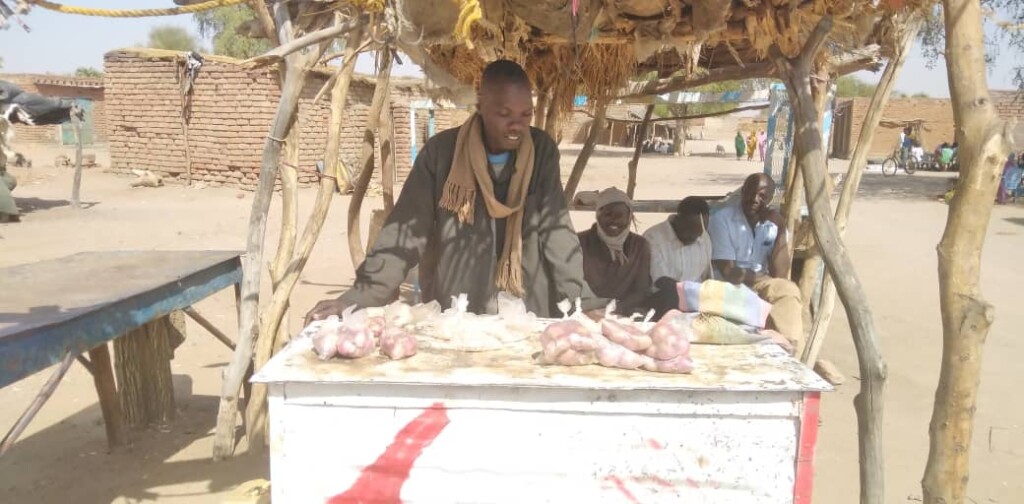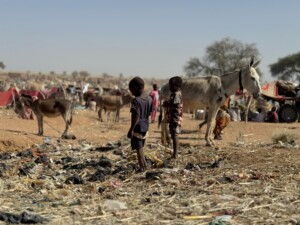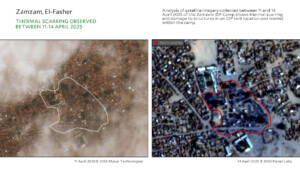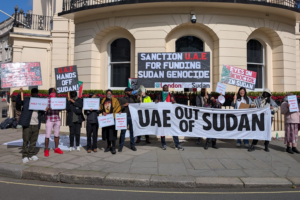FEWS NET: Clashes worsening ‘already severe’ food insecurity in Sudan

Selling onions and sweet potatoes at the market of Dalami in the Nuba Mountains on February 1 (Photo: Abdelrahim Kunda)
Since fighting between the Sudan Armed Forces (SAF) and Rapid Support Forces (RSF) has spread to Sudan’s breadbasket in the south-east, food security in the country has become more insecure, according to a Famine Early Warning Systems Network (FEWS NET) alert published on Thursday.
After Ethiopia and Yemen, Sudan is expected to have the third highest share of the population in need among FEWS NET’s monitored countries.
“The widening of hostilities, combined with large-scale population displacement, atrocities against civilians, destruction of goods and infrastructure, pervasive looting, and poor humanitarian access, is worsening an already severe food security situation,” reported FEWS NET.
Some households are expected to deteriorate to a catastrophic level in Omdurman, Khartoum state, and El Geneina, West Darfur, in the upcoming lean season. FEWS NET also reported that “crisis outcomes are widespread” and “emergency outcomes exist in heavily impacted urban areas.”
Significant disruption and limited, minimal, or no activity across Sudan’s market and trade routes has exacerbated the crisis in Sudan in December and January. Along with “bureaucratic and insecurity-related challenges impeding food assistance deliveries,” food availability in 2024 is expected to be below average due to “below-average domestic cereal harvests, low opening food stocks, [and] significantly below-average wheat import volumes.
Mid-December, battles near Wad Madani, capital of El Gezira, forced nearly 15,000 people to flee the besieged city. These battles, which spread to Sennar, White Nile state, and Kordofan region, “interrupted main season harvesting of sorghum and millet, worsening already below-average expectations for the national cereal harvest,” reported FEWS NET.
“The fighting has also interrupted the cultivation of winter wheat in the El Gezira irrigation scheme, which typically accounts for 40 to 50 per cent of total wheat production, and damaged critical irrigation infrastructure.” On October 26, the El Gezira and El Managil Farmers Alliance warned of a significant decline in the production of sorghum in 2023 due to a lack of sufficient irrigation.
Dalami in the Nuba Mountains, South Kordofan, is experiencing a severe shortage of sorghum, journalist Abdelrahim Kunda told Radio Dabanga last week. The market is reportedly “devoid of anything for sale.” A large number of the town’s residents complained that they had been without food for two days.
The harvest of sorghum in Dalami was extremely poor last year due to the lack of rain, the destruction of crops by locusts and birds, delayed agricultural funding, and the “sheer unpredictable security situation,” said Kunda.
After having toured the area between Dalami and Kartala in neighbouring Habila locality, he said he fears that “the predictions by international organisations about a famine in Sudan are true”.
FEWS NET also reported that: “According to the Ministry of Agriculture, total official wheat imports in 2023 reached only half of what is typically imported and only one-third of estimated demand due to declining government revenue and shocks to the supply chain.”
In December, the early warning food insecurity monitor warned that food insecurity outcomes were expected to be “atypically elevated and rising” in 2024. Widespread crisis outcomes are expected across most of the country, with emergency outcomes persisting through May.
FEWS NET noted that the displaced will be the worst affected. According to the UN Office for the Coordination of Humanitarian Affairs, the war has led to more than 10.7 million people displaced inside and outside of Sudan.











 and then
and then